
ТП (урок 6)
.pdf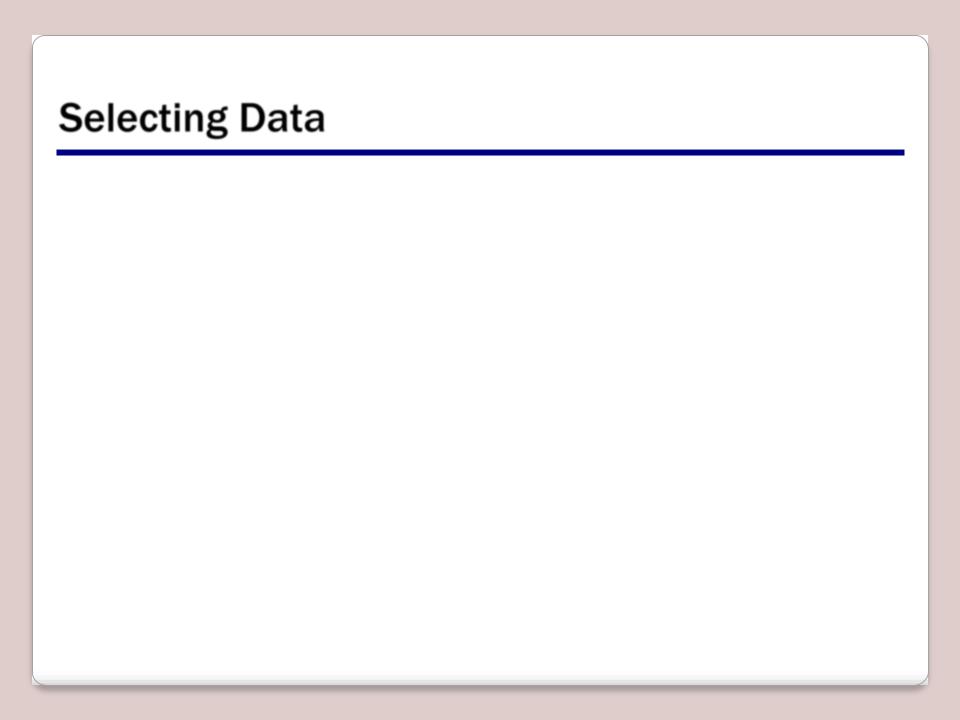
Selecting Data
•The SELECT statement is used to retrieve data from one or more database tables.
SELECT list_of_fields
FROM list_of_tables
WHERE where_clause
GROUP BY group_by_clause
HAVING having_clause
ORDER BY order_by_clause
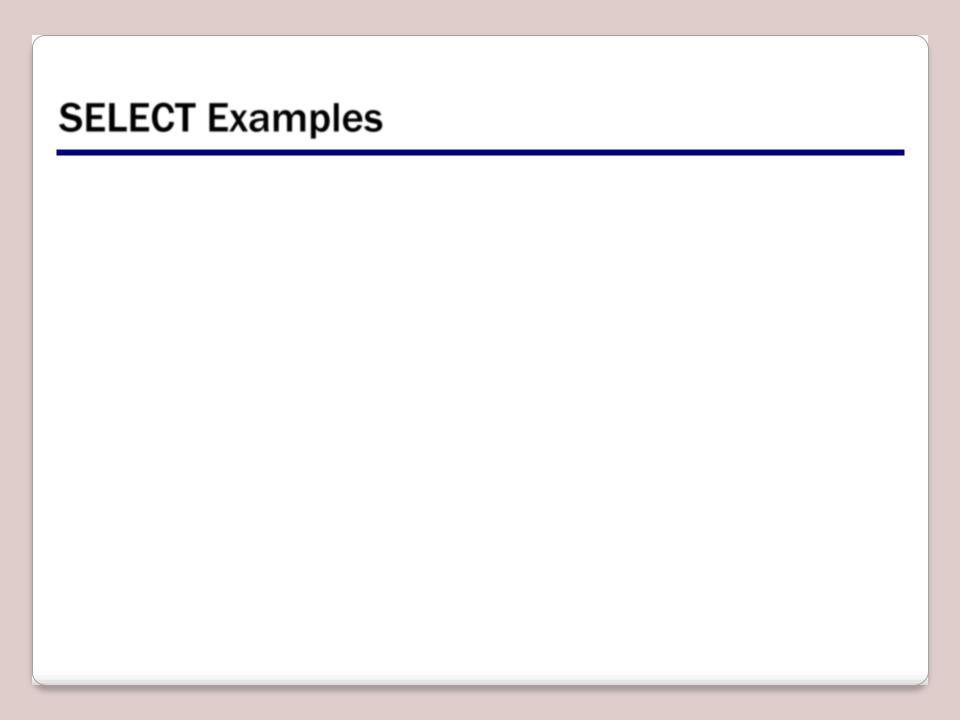
SELECT Examples
•The following SELECT statement matches each order with corresponding customer:
SELECT OrderID, Customers.CustomerId, ContactName
FROM Orders INNER JOIN Customers
ON Orders.CustomerId = Customers.CustomerId
•The following SELECT statement gets all orders shipped to Canada:
SELECT *
FROM Orders
WHERE ShipCountry = 'Canada'
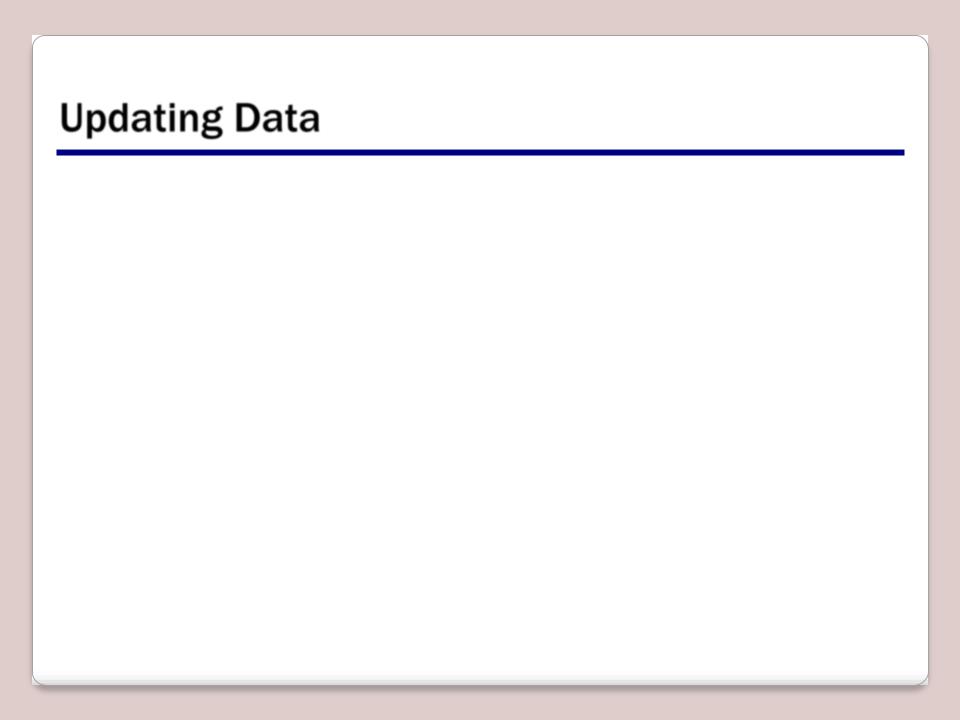
Updating Data
•The UPDATE statement is used to update information in database tables.
•The following statement a specific customer’s contact name:
UPDATE Customers
SET ContactName = 'Maria Anderson'
WHERE CustomerId = 'ALFKI'
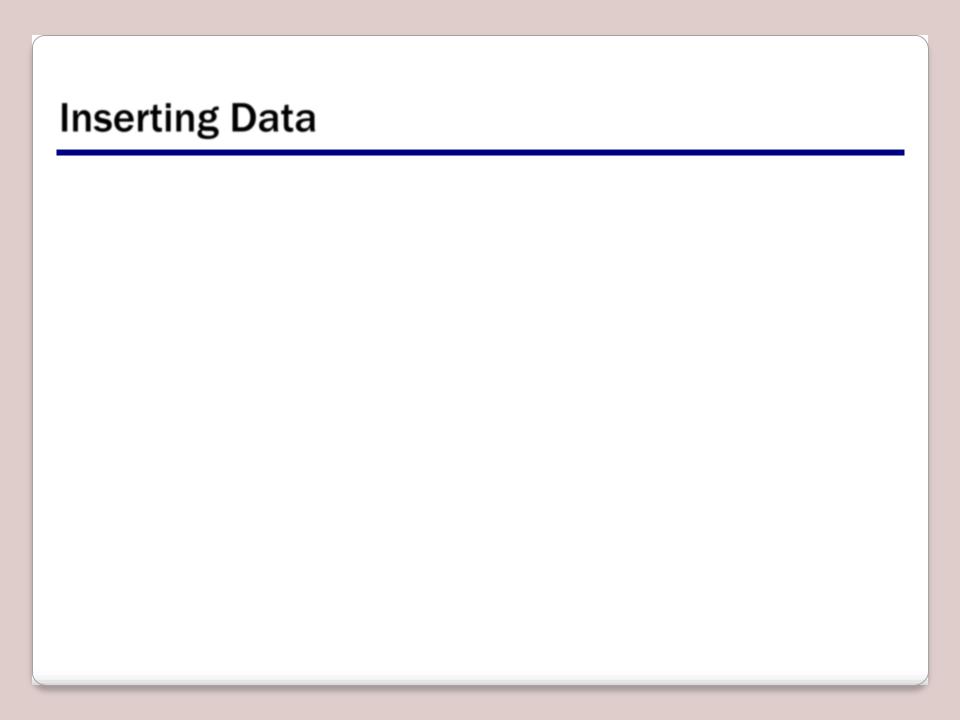
Inserting Data
•The INSERT statement is used to add one or more rows to a database table.
•The following statement inserts a new record to the Order Details table:
INSERT INTO [Order Details]
(OrderId, ProductId, UnitPrice, Quantity, Discount)
VALUES (10248, 2, 19.00, 2, 0)
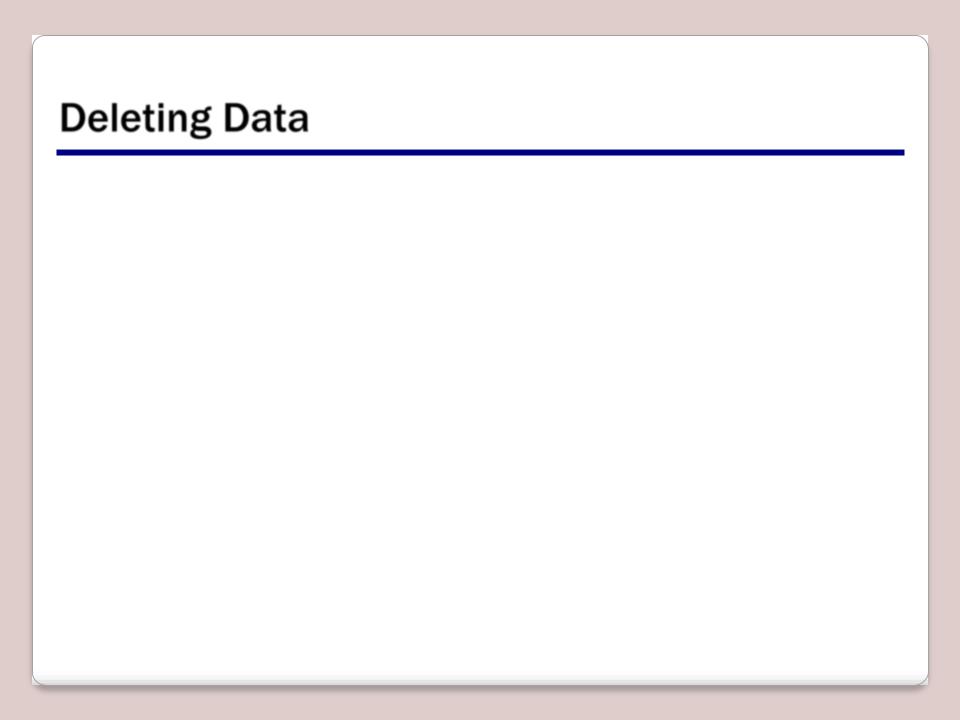
Deleting Data
•The DELETE statement is used to remove information from database tables.
•The following statement deletes a record from the Customers table:
DELETE FROM Customers
WHERE CustomerId = 'ALFKI'
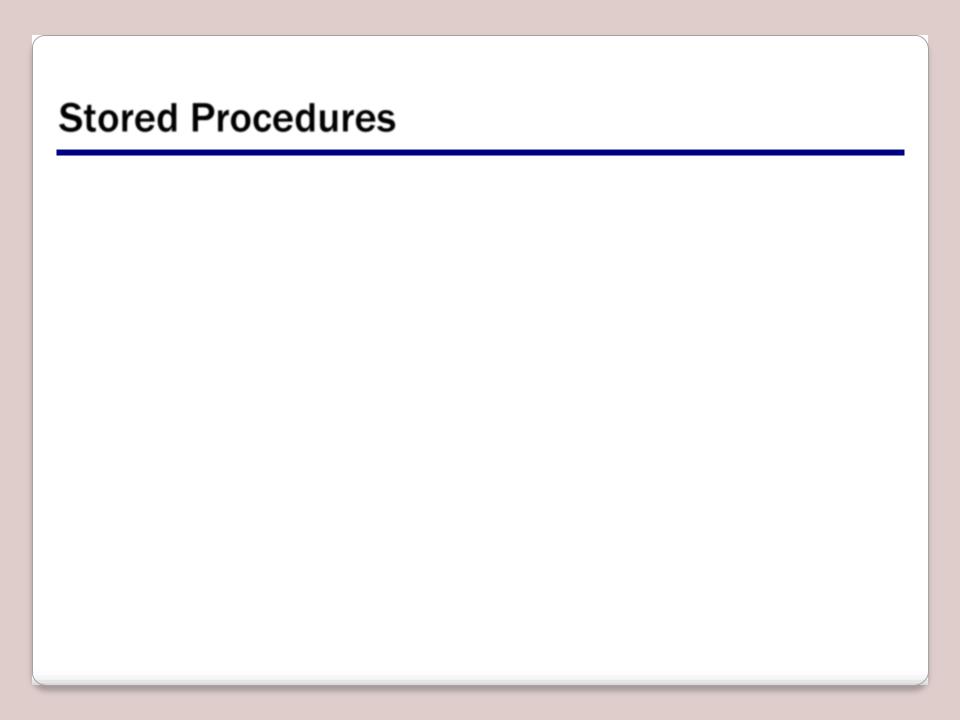
Stored Procedures
•A stored procedure is a set of SQL statements that is stored in a database.
•Stored procedures benefits:
–You can use them to save complex SQL statements for future execution.
–SQL Server compiles stored procedures so that they run faster than ad hoc queries.
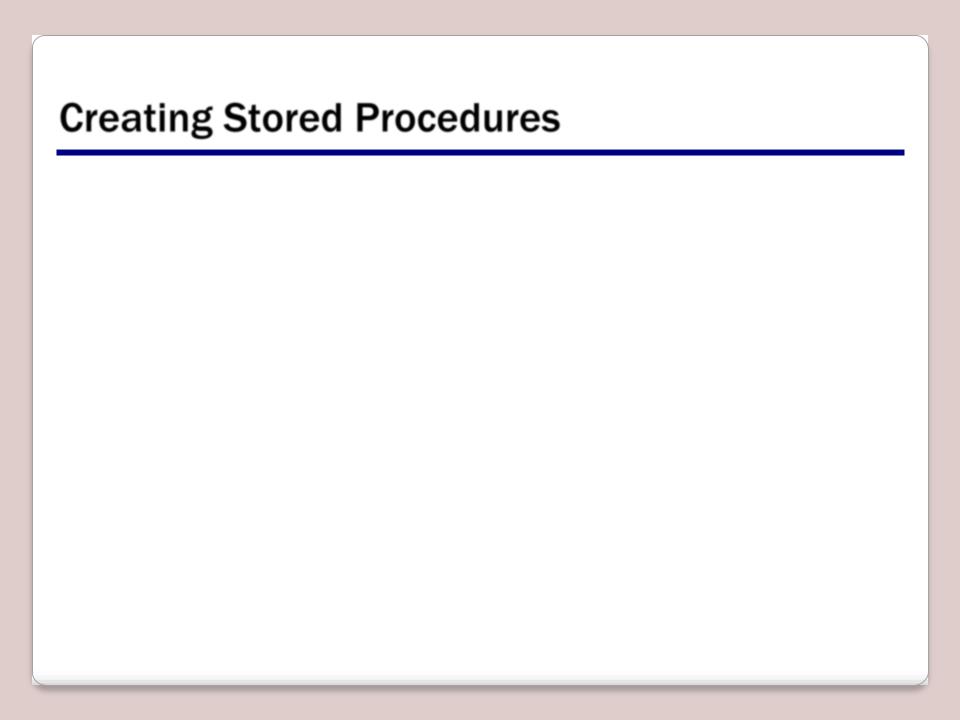
Creating Stored Procedures
•You use T-SQL’s CREATE PROCEDURE statement to create a stored procedure.
•The following stored procedure, when executed, returns all customers from France:
CREATE PROCEDURE GetCustomersFromFrance
AS
SELECT * FROM Customers
Where Country = 'France'
RETURN
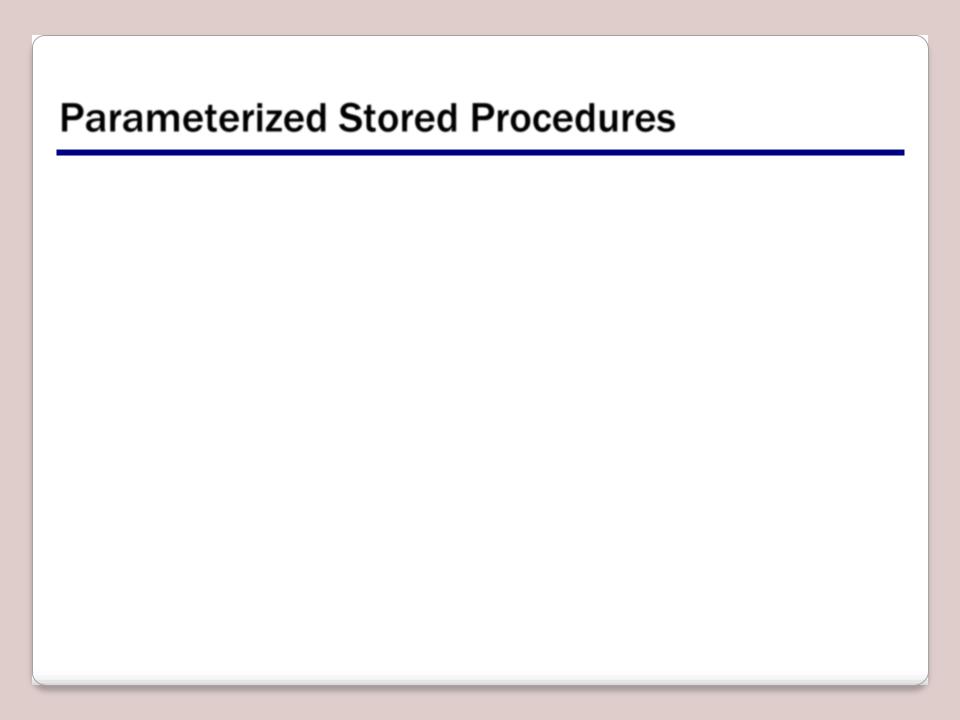
Parameterized Stored Procedures
• The following stored procedure, when executed, returns total sales for a given customer:
CREATE PROCEDURE dbo.GetCustomerSales
(
@CustomerId char(5), @TotalSales money OUTPUT
)
AS
SELECT @TotalSales = SUM(Quantity * UnitPrice) FROM (Customers INNER JOIN Orders
ON Customers.CustomerId = Orders.CustomerId) INNER JOIN [Order Details]
ON Orders.OrderId = [Order Details].OrderId WHERE Customers.CustomerId = @CustomerId
RETURN
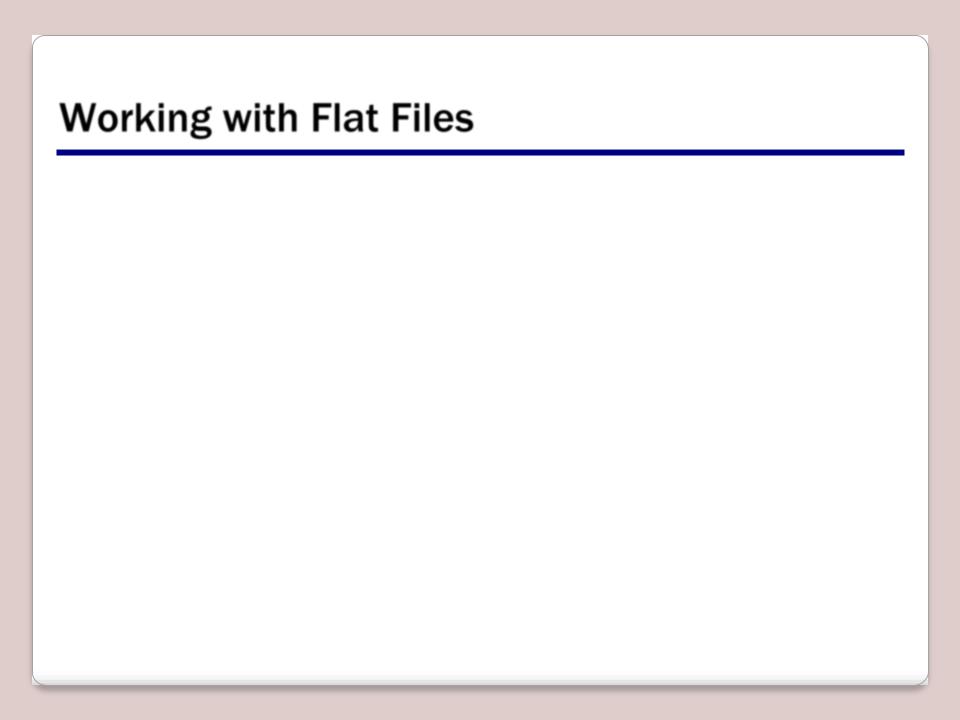
Working with Flat Files
•The data in a flat file can be plain text or binary.
These files are called “flat files” to distinguish them from more structured forms of storage, such as relational databases and XML files.
•The StreamReader and StreamWriter classes allows you to manipulate text files.
•The BinaryReader and BinaryWriter classes allows you to manipulate binary files.
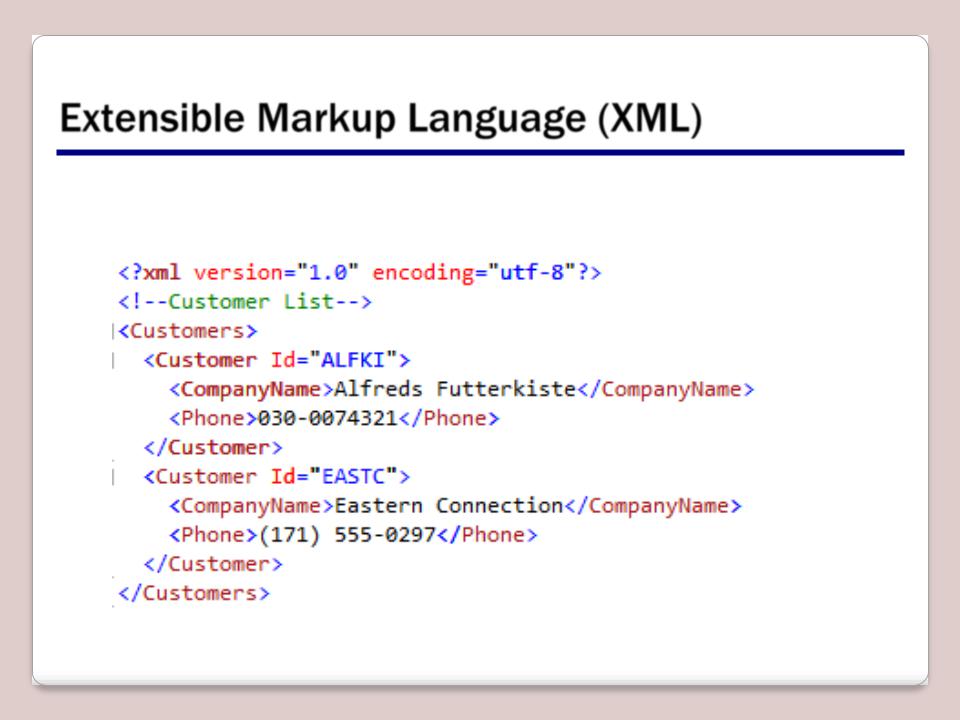
Extensible Markup Language (XML)
•XML is a text-based format for representing structured data.
